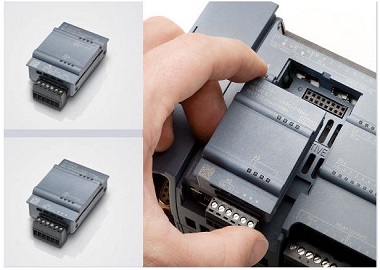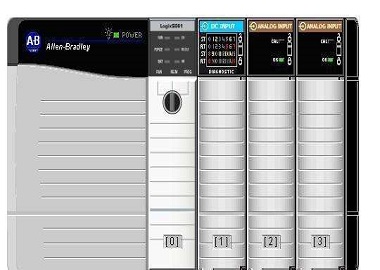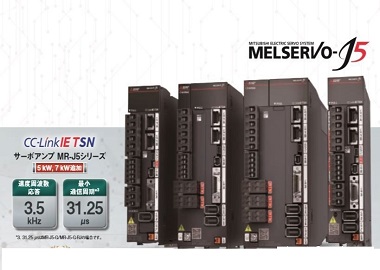
Before, we disassembled a Delta MH2 automation controller . In this issue, let’s take a look at servo products – ASDA-B3.

From the outside, the ASDA-B3 drive adopts a single independent structure style, that is, each type of drive module is integrated with a complete rectifier and inverter circuit, which can form a set of drive system separately. According to the official report, B3 has a certain improvement in installation size compared to previous products. For example, the width of a 400 W drive is 60 mm, which is a 20% reduction in width compared to the previous generation B2. However, B3 does not support zero-pitch installation, and 25mm spacing is required for multi-axis parallel installation.

Each operation interface is mainly on the front panel, which is divided into two areas, a small display operation on the top and a large wiring port on the bottom. The display operation area integrates a 5-digit 8-segment display, 4 debugging operation buttons and a mini-USB debugging port. The wiring port area is divided into left and right sides. On the left is the power area, including power input, braking resistor, motor port and safety ground; on the right is the signal control area, which has bus communication, I/O control, safety control and servo feedback. Several ports. But in general, the layout of the wiring port is to place the input on the top and the output on the bottom, which is also a popular practice in the industry.
In terms of power input, B3 still uses a voltage level of 200 ~ 230 VAC. The low-power 100W ~ 1.5kW model can use single-phase or three-phase, and only three-phase input can be used for 2kW or more.

In terms of power output, the B3 driver has 8 gears and 4 frame sizes. The output power ranges from 100W to 3kW, the rated output current is 0.9 to 19.4 A, and the maximum output current is 3.88 to 58.9 A.

Compatible motors include:

The feedback of these motors is a 24-bit optical encoder or a 17-bit magnetic encoder, with single-turn or multi-turn counting options. According to Delta’s official statement, the optical encoder feedback part uses its exclusive light-sensing compensation function, which can help improve product reliability; and magnetic induction technology can help improve the product’s anti-vibration and oil resistance capabilities.
Let’s look at the control performance of this product.

B3 also has the ability of fast self-tuning of the control loop, and the user can complete the automatic adjustment of the servo control loop parameters only by operating the debugging software or the key panel. Delta said that based on the new tuning algorithm, the tuning time of B3 will be reduced by 40% compared to B2 and B3. At the same time, under the same inertia ratio, its speed loop width ratio has also been greatly improved;

Notch filter used to suppress high-frequency vibration. The frequency parameters have been increased from 3 groups to 5 groups of the predecessor product. The filter frequency range is extended to 5000 Hz, and it can automatically scan and complete resonance suppression. The time is compared with the predecessor model. Shortened by 70%;



Analog feedback control function, supports 12-bit analog input feedback, can realize real-time and accurate PID control through external sensor analog signal, and improve production yield and processing performance.

Regarding the motion control interface, B3 provides users with 4 protocol high-speed bus communication port options, MODBUS, CANopen, DMCNET (Delta Motion Control Network) and EtherCAT. Therefore, B3 can be integrated into Delta’s own equipment. The control system can also be connected to automation systems of other brands through these communication ports to realize various single-axis and multi-axis integrated motion control functions.

It is worth mentioning that, as a bus-type servo product, the B3 driver also integrates some auxiliary motion control functions. include:
-PR mode: Provides 99 segments of configurable motion instructions. The user can preset the speed, position… and other parameters of each instruction through the graphical interface of the debugging software, and then trigger these instructions through external I/O or bus in order to achieve Continuous control of single-axis motion attitude.
-High-speed position capture (register): Built-in 2 high-speed digital input ports, which can cooperate with the EtherCAT bus to capture the position value of the input point at the moment of state change (bus clock point) during the high-speed movement of the axis;

In addition, the official special emphasis on the debugging software of this product in the promotional materials. It adopts tree structure design and graphical parameter setting method. Especially in the control loop debugging, it provides users with guided and interactive automatic and advanced gain adjustment functions. Users can complete the servo gain adjustment through sequential settings based on the operating characteristics of different equipment.

According to Delta officials, this ASDA-B3 is more suitable for AOI inspection machines, tool magazine turrets, wafer transplanters, small machine tools, diamond cutting machines, winding equipment… and other types of automation applications.


